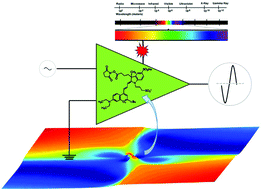Mapping minimum reflection distribution of surface plasmon resonance with a complex refractive index†
Abstract
One of the main challenges in making any further advances in the field of SPR biosensing is in the detection of small molecules, low analyte concentrations, and single particle interactions. To this end, labels have been used to amplify the signal of this traditional label-free technique. The physical properties associated with these labels can enhance the SPR signal by affecting the dielectric constant both in the real and imaginary parts. In this paper, we have taken a holistic approach to considering the dielectric properties of these labels and their effect on the minimum resonance intensity (MI) is mapped for the Kretschmann SPR configuration. These maps provide a way for matching label properties for particular SPR conditions and reveal that thicker Au films (∼65 nm) make the MI method more suitable for the detection of absorbing materials. Whereas the wavelength SPR at 50 nm Au film thickness generates a shift of similar or lower magnitude for adsorption of the absorbing label, compared with BSA adsorption, in the ‘thick’-film SPR using the MI format, the signal due to the non-absorbing BSA adsorption tends towards zero (background), whereas the absorbing label produces a large well resolved signal.

- This article is part of the themed collection: RSC papers by GRC Bioanalytical Sensors 2018 Speakers


 Please wait while we load your content...
Please wait while we load your content...